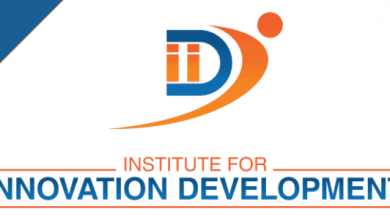A Keen Eye on the Global ETF Market


To make Wealthtender free for readers, we earn money from advertisers, including financial professionals and firms that pay to be featured. This creates a conflict of interest when we favor their promotion over others. Read our editorial policy and terms of service to learn more. Wealthtender is not a client of these financial services providers.
➡️ Find a Local Advisor | 🎯 Find a Specialist Advisor

[The swift rise of more than 14,000 global ETFs, including 4,400 in the U.S., has propelled the $15 trillion ETF market into one of the fastest-growing areas of finance. Fueled by product innovation, regulatory changes, and the entry of both established and emerging sponsors, the ETF market is expanding at a pace that has PwC projecting $30 trillion in global assets by 2029.
This surge signals more than just growth – it marks the full transition of ETFs from niche products to a core component of modern investment strategies. And with that shift comes a new challenge: navigating an increasingly complex universe of Exchange-Traded Products that requires high-quality and precise data.
To delve more deeply into how ETF research is keeping pace with the expanding global ETF marketplace, we reached out to Jim Gregory, Senior Director of Business Development, and Trammel Robinson, Director, ETF Issuer Relations at ETF Global – a leading, independent provider of enterprise-grade ETF reference data, analytics, and hosts of their semi-annual ETP Forums dedicated exclusively to the global Exchange-Traded Products ecosystem. At the core of their value proposition is data that is structured, timely, and precise, fueling ETF research with comprehensive ETF coverage. They provide T+1 timeliness and institutional-grade data feeds to hundreds of institutional investors, including top quantitative hedge funds.
As specialist ETF data providers, we asked them how they developed their data capabilities to support institutional and financial research professionals in understanding and navigating this rapidly growing global pool of diverse ETF vehicles that places a higher level of complexity on research, due diligence, analysis, selection, and portfolio construction.]
Hortz: What is your data philosophy and how does it serve the needs of your clients and industry partners?
Gregory: Our guiding philosophy has always been to provide the most granular and highest integrity ETF data available. We believe high-quality, timely, and complete data is the foundation for informed investment decisions. That is why we collect our data straight from primary sources, ensuring our clients have access to information that they can trust.
Robinson: Our client base spans three main communities.
First are Investment Professionals, RIAs, Financial Advisors, insurance specialists, CPAs, and private bankers, who rely on our data to manage client portfolios with precision.
Second are Capital and Middle Market teams, including trading desks, algorithmic traders, and liquidity providers, who depend on our T+1 data for execution and risk management.
Third are Institutional Investors like pension funds, family offices, hedge funds, and asset managers, who use our enterprise-grade feeds to support large-scale investment strategies.
While their roles vary, they share one thing in common, the need for the most detailed and dependable ETF data available.
Hortz: What specific data capabilities do you offer that differentiate you from larger competitors?
Gregory: Unlike generalist vendors that cover multiple product types, we specialize exclusively in ETFs. That focus allows us to deliver depth that’s “an inch wide but a mile deep.” Our data is sourced from the most authoritative points in the chain, providing a quality advantage that generalist vendors just cannot match.
Robinson: As an example, for our core offering, we provide 10 U.S. data feeds, 3 Canadian feeds, and 2 EMEA feeds, with the U.S. feeds backed by more than 14 years of U.S. ETF historical data. In this market, the difference between a good decision and a great one often comes down to the integrity of the data.
Our clients know they are working with the most complete, accurate, and up-to-date information. That precision supports everything from portfolio management, trade execution, and risk oversight to compliance and performance analysis. When your data is rock solid, you can move faster, manage risk more effectively, and make investment decisions with confidence.
Hortz: Why is data research so important for ETF investment strategies?
Gregory: We are more than just a database of funds. Our data is central to the research performed by investment professionals. It is transformed into actionable intelligence that supports them across every stage of the process, from due diligence and comparative analysis to portfolio construction and risk oversight. By structuring, organizing, and enriching ETF data with depth and precision, we provide clients with the tools to uncover insights, identify opportunities, and make more confident investment decisions.
Research will always be essential in ETF investment strategies because it helps investors understand the underlying assets, structure, and risks of each fund. By analyzing holdings, sectors, fees, and performance drivers, research ensures strategies stay aligned with investment goals, reduces the risk of surprises, and supports more informed, data-driven decisions.
Hortz: Can you tell us more about the specific tools you offer your professional investor clients and how they are being used?
Robinson: Our research platform includes:
ETF Profile Feed – This dataset contains over 50 data points at the ETF level ranging from the most basic and descriptive to the ETF’s exposures, metrics, and measures.
Daily ETF Fund Flows – This dataset reflects the daily inflows and outflows into each U.S. listed ETF.
ETF Constituents (Full Holdings) – This dataset provides each holding in U.S. listed ETFs and its respective details such as its weighting, shares held, etc.
ETF Taxonomy – Classification Service – The ETF Global Expanded ETF Taxonomy is the most complete and granular classification system for U.S. listed ETFs. It enables ETF issuers and investors to compare products at the deepest level, supporting product development, peer group comparisons, competitive landscape analysis (great for marketing differentiated products), and a fuller understanding of the ETF as a whole.
Equity Exposure Report – Breaks down the underlying equity exposures across all ETF holdings, helping assess sector, region, and style tilts.
ETF Tear Sheets – Concise, data-rich reports providing a full snapshot of any U.S.-listed ETF, from holdings to performance.
Portfolio Tear Sheet – This allows users to build, test, and analyze model portfolios with real ETF data.
ETF Scanner – Powerful filtering tool to quickly identify ETFs that meet specific criteria or strategies.
Sanctions Report – Flags and details any ETF holdings that may be subject to global sanctions, enabling compliance teams, advisors, and institutions to proactively manage risk.
Hortz: How else do you work with your institutional and investment professional clients?
Robinson: Beyond our data and tools, we host the semi-annual ETP Forum which is the largest one-day ETF conference in the industry. These forums bring together top ETF issuers, analysts, and investment professionals to share perspectives on identifying market and product trends, decoding regulatory updates, and exploring emerging and innovative portfolio strategies. It is a central hub for collaboration in the ETF ecosystem.
Gregory: I have participated in ETF conferences for many years, both as a speaker and attendee, and I can say the ETP Forum stands out. It is a curated space for meaningful conversations between issuers, analysts, and institutional investors. The relationships built there often lead directly to new opportunities and stronger investment outcomes.
We are excited to welcome the industry back on November 18, 2025, at the New York Athletic Club for what promises to be our most dynamic ETP Forum yet.
This article was originally published here and is republished on Wealthtender with permission.
About the Author

Bill Hortz
Founder Institute for Innovation Development
Bill Hortz is an independent business consultant and Founder/Dean of the Institute for Innovation Development- a financial services business innovation platform and network. With over 30 years of experience in the financial services industry including expertise in sales/marketing/branding of asset management firms, as well as, creatively restructuring and developing internal/external sales and strategic account departments for 5 major financial firms, including OppenheimerFunds, Neuberger&Berman and Templeton Funds Distributors. His wide ranging experiences have led Bill to a strong belief, passion and advocation for strategic thinking, innovation creation and strategic account management as the nexus of business skills needed to address a business environment challenged by an accelerating rate of change.




